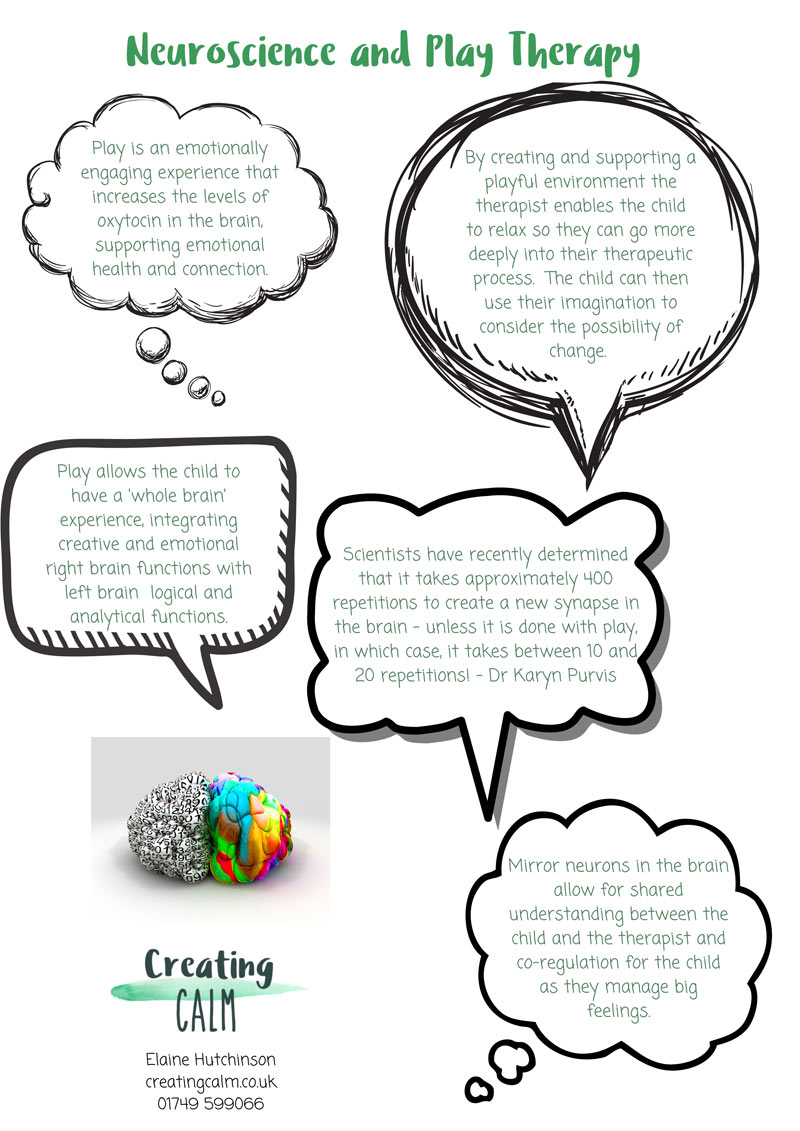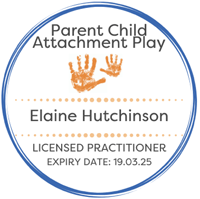Neuroplasticity is defined as 'the brain's ability to reorganize itself by forming new neural connections'.
There are several key factors in neuroplasticity in play therapy.
- The development of a positive therapeutic relationship between the child who is coming for therapy and the therapist.
- The ability of the child to determine their own 'sweet-spot' of emotional arousal through play to enhance their own neuroplasticity.
- The integration of affect and cognition as the child and therapist collaboratively create an environment for change and learning to take place.
- The connection between the therapist and the child allows them to co-construct shared narrative and shared meaning in their play.
Through play, the therapist can draw attention to the child's strengths, capabilities and developing competencies.
Tracking statements allow the therapist to acknowledge the child's ability to make decisions and to expand their creative skills.
The therapist will also make positive reflections so that the child can see themselves in new and positive ways as well as bringing awareness for the child in relation to their body language, tone of voice and facial expressions.
Over time the therapist can also track change for the child, drawing attention to the progress the child has made in sessions.
As the therapeutic bond between the child and the therapist develops and oxytocin levels are increased for the child, there is an increase in trust and emotional recognition for the child.
The child can learn new ways of engaging with others and problem solving as defensive responses are relaxed.
As part of the context of the play, the child can have safe opportunities to try new ways of managing big feelings, challenging people and hard situations.
Mirror neurons in the brain allow the child to 'borrow' the nervous system of the therapist and experience co-regulation and soothing of their physiology when they are aroused and struggling to manage big feelings.
The mirror neurons in the brain also allow the therapist to attune to the client and develop a deeper understanding of them and their experiences.
Play is a child's natural language and also the primary language of the brain.
The prefrontal cortex of the brain which is responsible for 'executive thinking' is not usually developed until adulthood (usually mid-20s) which means talking therapies are not developmentally appropriate for children and adolescents.






